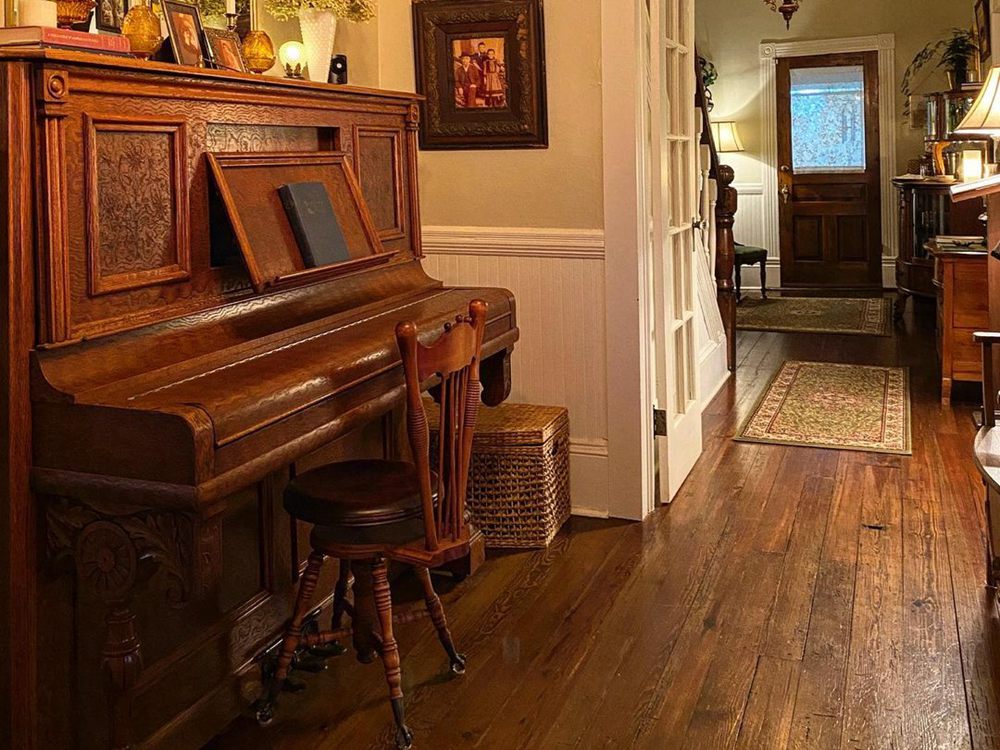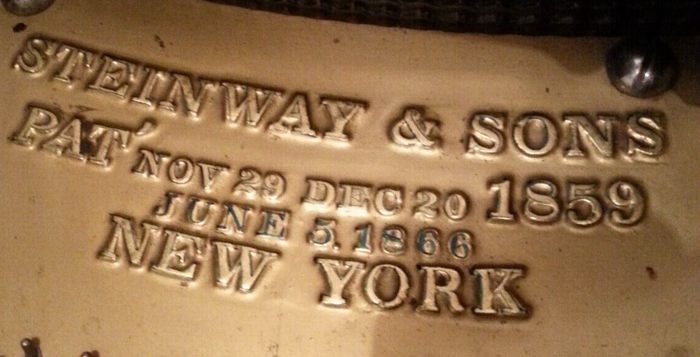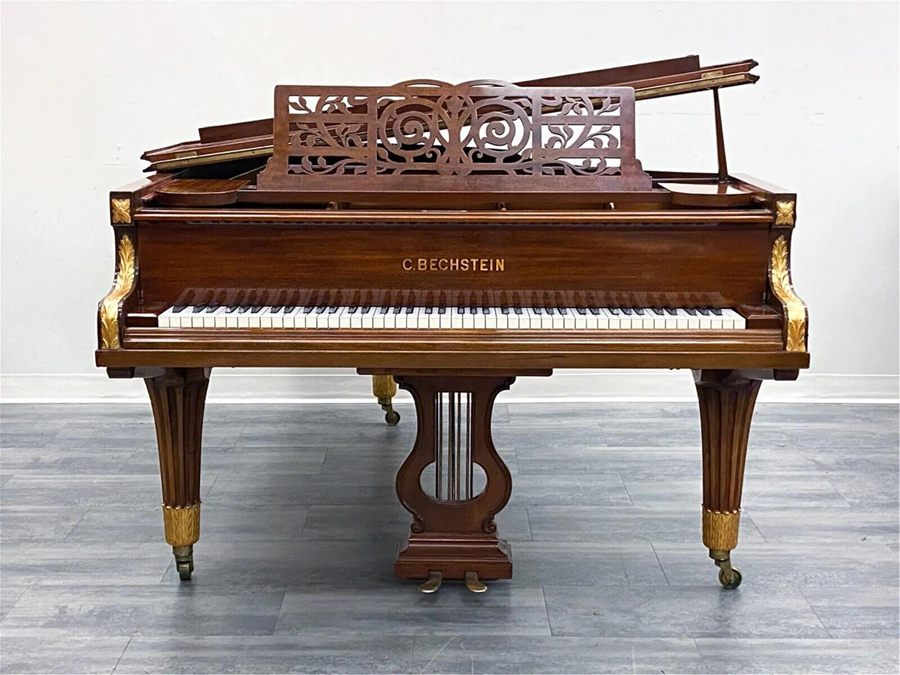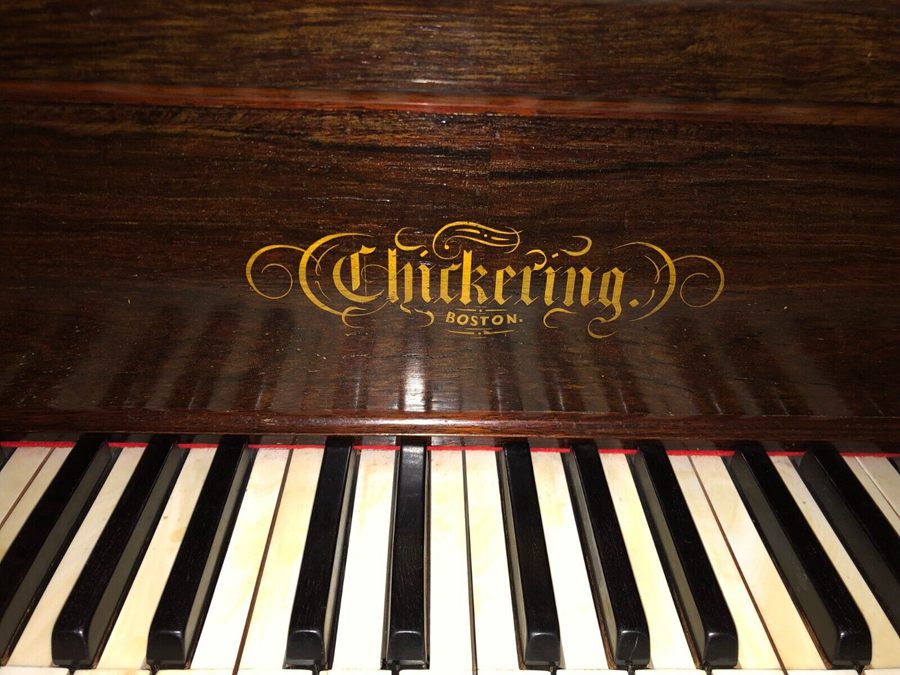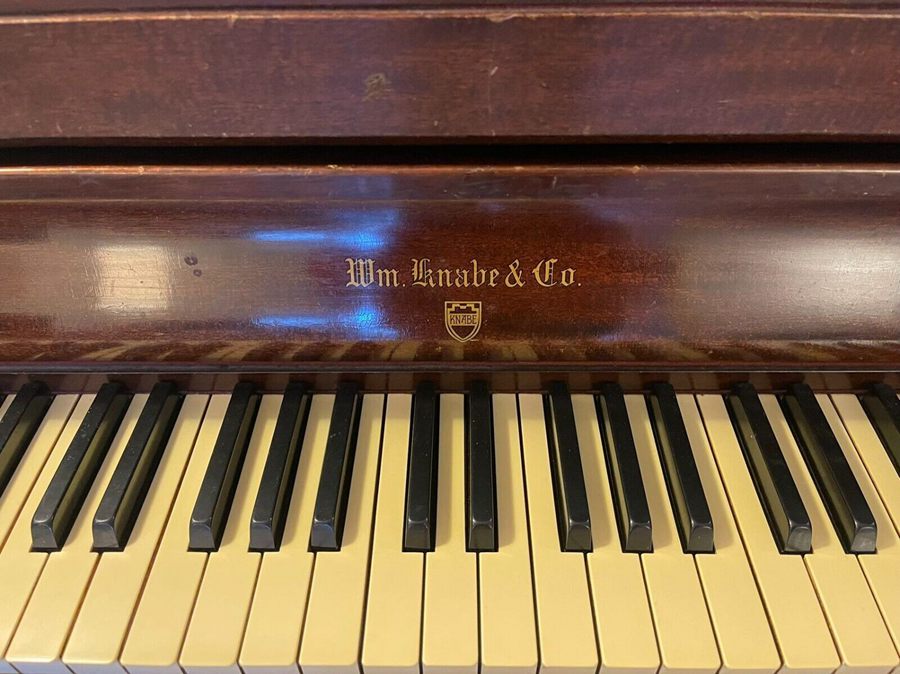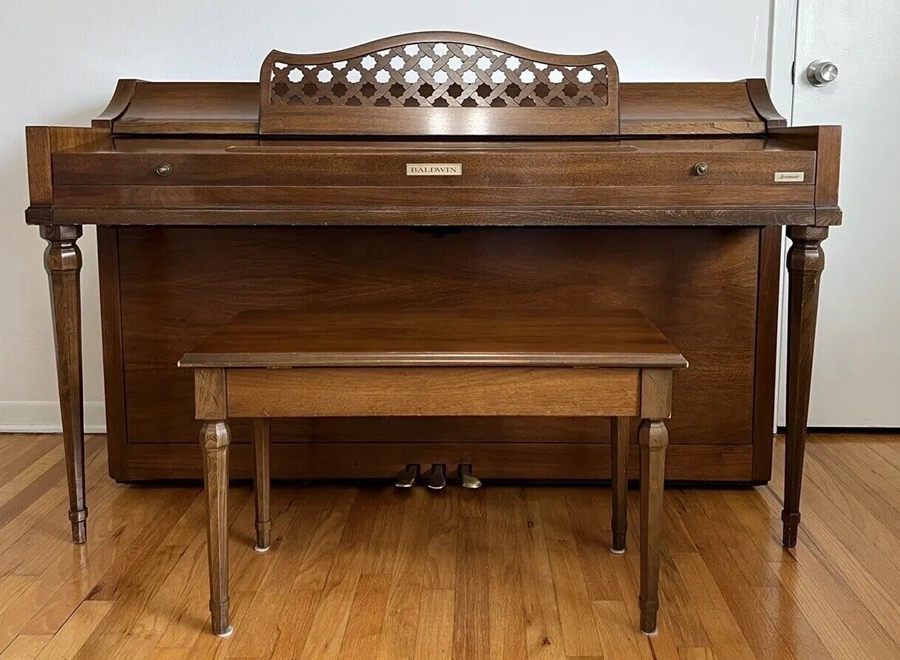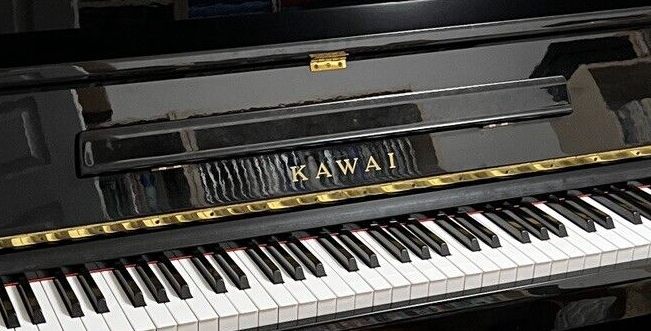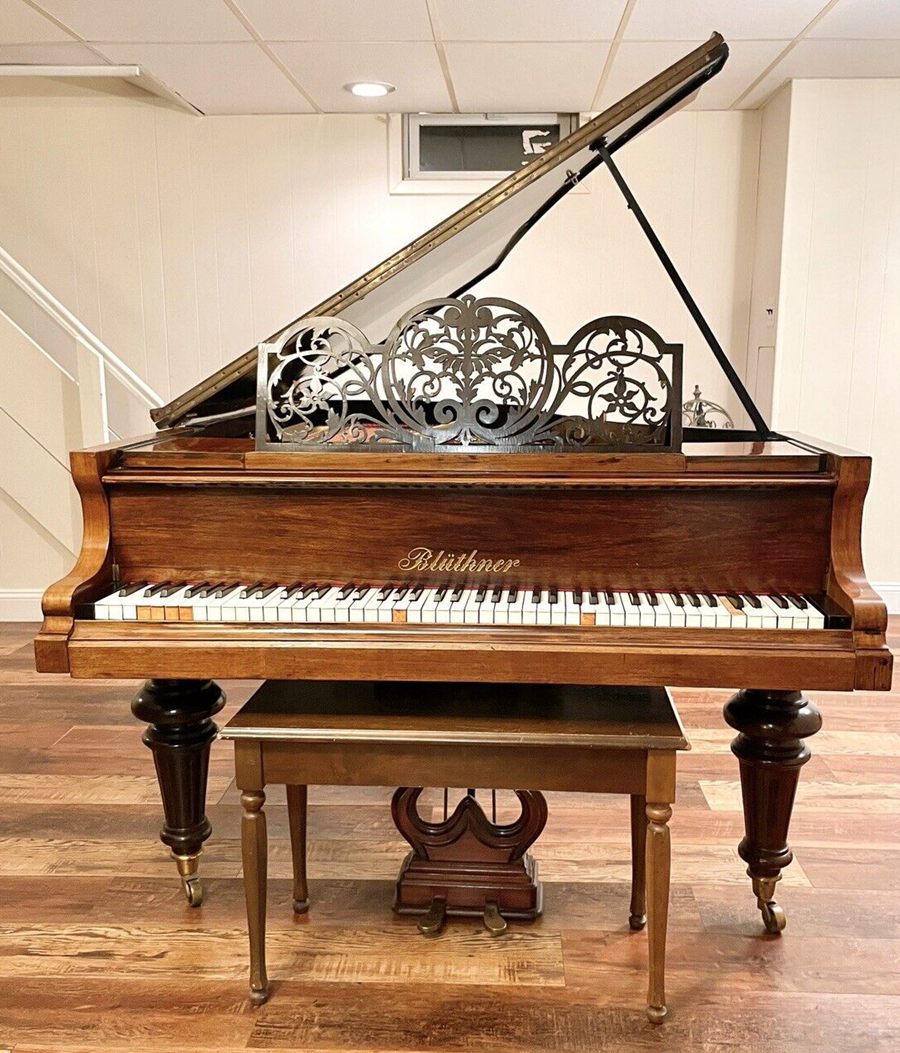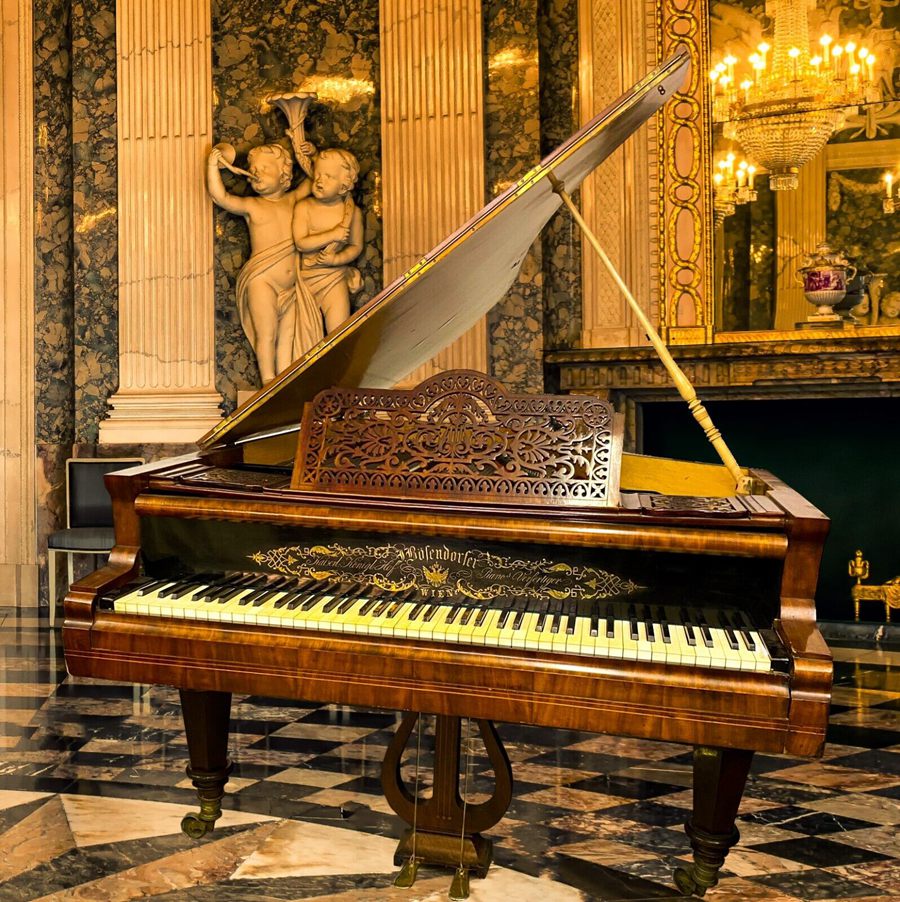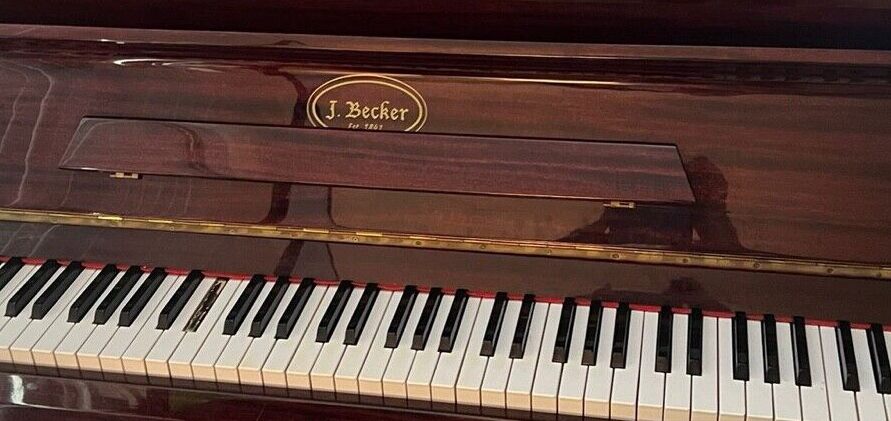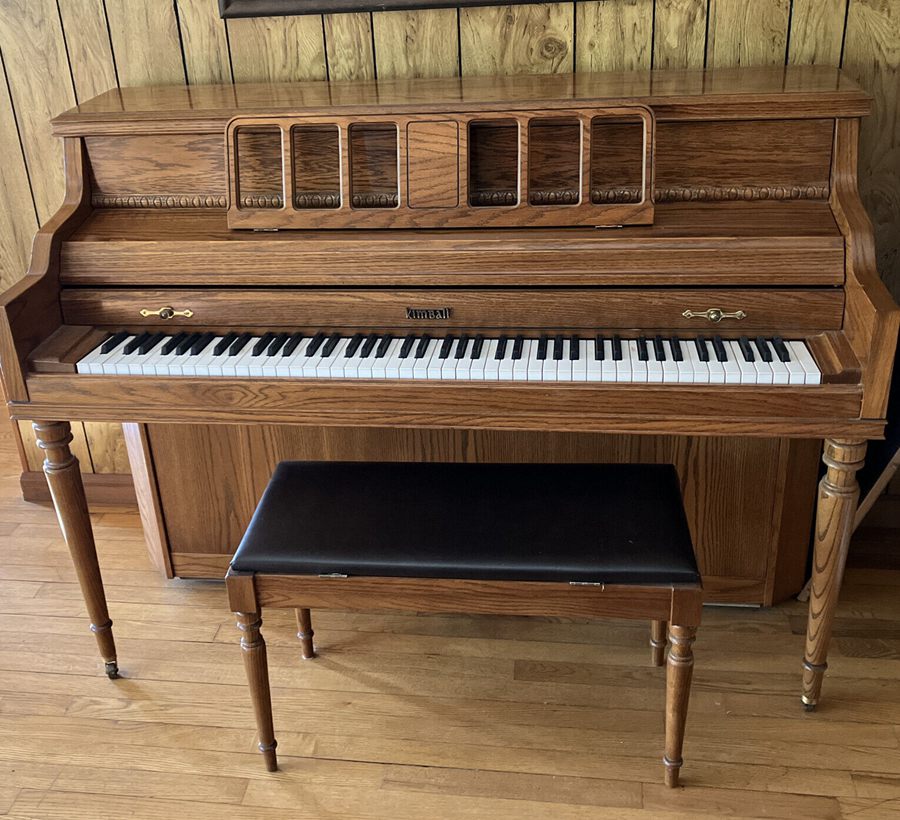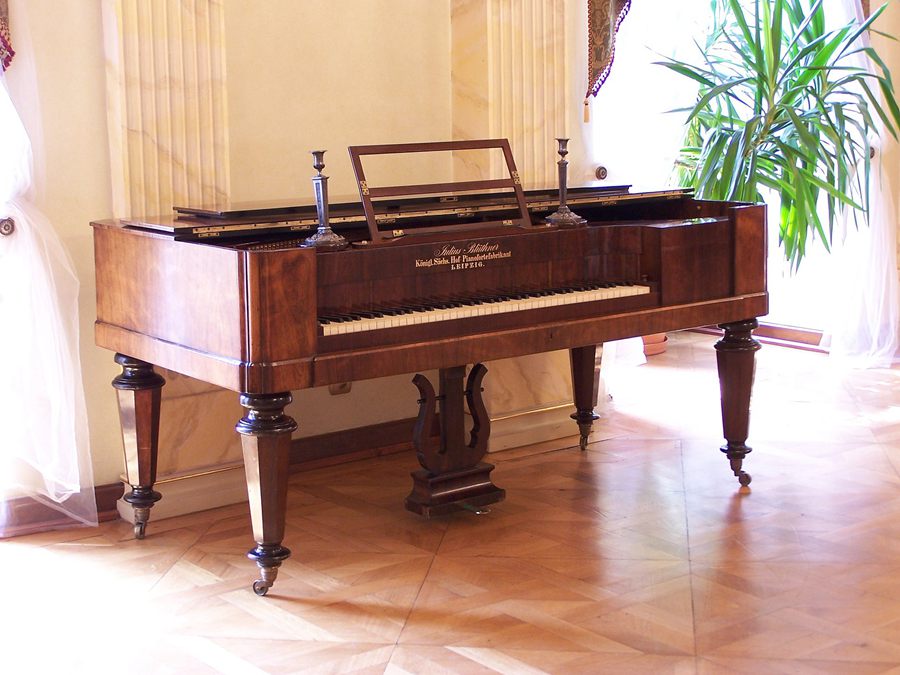As you delve into the world of antique pianos, you’ll discover a rich history filled with remarkable craftsmanship and musical significance. These beautiful instruments have been cherished by musicians and collectors alike for centuries, and understanding the brands, identification, and value of antique pianos can provide you with an appreciation for their importance in the history of music. In this article, we will explore key elements that you should consider to broaden your knowledge about antique pianos.
Renowned piano brands throughout history have left their mark on the piano manufacturing scene and continue to be sought after by collectors. Some popular antique piano brands include Steinway, Baldwin, Yamaha, Kawai, Bechstein, Blüthner, Bosendorfer, Chickering, and Knabe. Each of these brands has its unique characteristics, styles, and noteworthy models that have made them desirable among collectors and musicians. By familiarizing yourself with these brands, you are better equipped to identify and evaluate various antique pianos.
In assessing the value of an antique piano, several factors come into play: age, brand, and serial number. Additionally, the rarity, historical significance, and, most importantly, the condition of the instrument can greatly impact its value. A well-preserved antique grand piano from a respected brand like Steinway or Bosendorfer can reach astonishing price tags of up to $195,000. However, keep in mind that determining the value of an antique piano is a complex process which may require professional appraisal. As you learn more about antique pianos, you’ll develop a deeper understanding of the factors that contribute to their worth and grow more skilled in recognizing exceptional instruments.
Table of Contents
The History & Evolution of Antique Piano
During the early 18th century, the invention of the piano marked a significant development in the world of music. As you delve into the history and evolution of antique pianos, you’ll learn about the iconic brands, methods for identification, and how to determine their value.
The piano’s origins can be traced back to the harpsichord, an instrument popular during the Renaissance and Baroque periods. However, the inventor of the modern piano, Bartolomeo Cristofori, revolutionized musical expression by creating an instrument with a wider range of dynamics and tonal possibilities. The early models were known as fortepianos, which were gradually refined over the decades.
Throughout the 19th century, piano manufacturers continued to innovate and experiment with new ideas. Notable advancements included:
- Introduction of cast iron frame
- Overstrung bass strings
- Expansion of the keyboard’s range
Some of the most renowned antique piano brands from this era include:
- Steinway & Sons
- Chickering
- Bechstein
- Pleyel
- Erard
To identify a specific piano, you may look for unique characteristics, such as:
- Serial number: It can be found stamped on the soundboard, iron frame, or inside the case.
- Manufacturer’s nameplate: Many pianos have a nameplate on the front panel or iron frame, displaying the brand and sometimes the manufacturing date.
- Woodwork and design: Antique pianos often showcase intricate carvings and ornate designs, which can be helpful in identification.
Determining the value of an antique piano primarily depends on its age, brand, condition, and rarity. Generally, a well-maintained piano made by a reputable manufacturer would fetch a higher price. Consulting an expert appraiser or a reputable dealer can provide a more accurate valuation.
As you explore the fascinating world of antique pianos, remember that these instruments not only represent a rich history of music but also exquisite craftsmanship and innovation that has shaped the piano as we know it today.
How to tell if a Piano is Antique or Old
To determine if your piano is antique or just old, you should start by identifying the brand and finding the serial number. The serial number is usually found near the tuning pins or etched onto the soundboard. If you cannot locate it there, try checking the back of the keyslip (immediately in front of/below the keys). Once you have the brand and serial number, cross-reference them using historical publications or online resources to determine the specific age of your instrument.
Some popular antique piano brands include Steinway, Baldwin, Yamaha, Kawai, Bechstein, Blüthner, Bosendorfer, Chickering, and Knabe. When inspecting your piano, pay attention to the craftsmanship, as many old piano brands are renowned for their meticulous work. Also, listen to the tone, as authentic antique pianos have a distinct and amazing sound.
In general, an old piano is considered modern if it is around 50 years old, while a car becomes an antique at 25 years old. So, if your piano is older than 50 years, it is likely leaning more towards the antique category. However, it is essential to consider several factors when determining the value of an antique piano, such as:
- Condition: Evaluate the condition of the piano, including its soundboard, strings, hammers, and keys. Check for signs of damage or wear that might impact its value or playability.
- Restoration: Has the piano been restored, either partially or fully? A well-restored piano typically holds more value than one in poor condition. Keep in mind that a fully restored antique piano may also be worth a fortune.
- Rarity: The rarity of the brand and model may significantly impact the piano’s value. Some pianos might be more valuable simply because they are harder to find.
Although it is helpful to know the age and brand of your piano, ultimately, the value will depend on various factors like those listed above. By thoroughly evaluating your piano’s condition and researching its age and brand, you can better understand whether your piano is considered antique or just old.
Popular Antique Piano Brands
Steinway & Sons
Steinway & Sons is a well-known and respected antique piano brand that was established in 1853 by Heinrich Engelhard Steinweg in New York. They have a reputation for producing exceptionally high-quality pianos that have been played by famous pianists throughout history. As an owner of a Steinway piano, you can be confident in its craftsmanship and lasting value.
Bechstein
Another prestigious antique piano brand is Bechstein, which was founded in 1853 in Germany by Carl Bechstein. Known for their precise construction and clear tone, Bechstein pianos have been favored by composers such as Claude Debussy and Richard Wagner. Owning a Bechstein piano signifies a strong appreciation for both quality and history.
Chickering
Chickering is an American piano brand established in 1823 by Jonas Chickering in Boston. They were known for their innovations in piano construction, including the patented cast iron frame for grand pianos. If you have a Chickering piano, you have a piece of American piano history in your possession.
Knabe
Knabe, another American brand, was founded in 1837 by Henry E. Knabe in Baltimore. Famous for their rich tone and elegant design, Knabe pianos were played at the White House during the administrations of Abraham Lincoln and Franklin D. Roosevelt. Owning a Knabe piano connects you to a rich American heritage.
Baldwin
Baldwin, established in Cincinnati in 1862, is a well-regarded antique piano brand, known for their excellent craftsmanship and rich tone. They have been played by many famous pianists, including Leonard Bernstein and Igor Stravinsky. As a Baldwin piano owner, you are linked to a long line of esteemed musicians.
Yamaha
Although Yamaha, a Japanese brand, was established more recently (1887), their pianos are still considered antiques due to the century of craftsmanship behind them. Known for their versatility and reliability, Yamaha pianos are played by both professionals and amateurs alike. Owning a Yamaha signifies both quality and practicality in your choice of instrument.
Kawai
Kawai, another acclaimed Japanese brand, was founded in 1927. They have maintained a reputation for consistently producing high-quality pianos that exemplify excellent craftsmanship and tonality. Choosing a Kawai piano means investing in a renowned and respected brand.
Blüthner
Founded in 1853 in Leipzig, Germany, Blüthner pianos are recognized for their exceptional sound quality and elegant design. Composers such as Johannes Brahms and Pyotr Ilyich Tchaikovsky have favored these instruments. Adept and passionate musicians appreciate the value of a Blüthner piano.
Bösendorfer
Established in 1828 in Vienna, Austria, Bösendorfer is one of the oldest and most luxurious piano brands in the world. They have been the official piano maker for the Emperor of Austria and are known for their rich, resonant sound. Owning a Bösendorfer piano signifies class and sophistication.
Becker
The Becker piano brand started in Saint Petersburg, Russia in 1845 by Jacob Becker. Known for their durability and consistent sound quality, Becker pianos were sought after during their time. Owning a Becker piano can provide a unique perspective on piano history and craftsmanship.
Kimball
Kimball is an American piano brand that was established in 1857 by William Wallace Kimball in Chicago. Known for their affordable prices during their time, Kimball pianos were a popular choice for many households. Having a Kimball piano indicates an appreciation for music and history on a more modest budget.
In your journey to explore these popular antique piano brands, be sure to consider factors such as age, condition, and rarity as you assess the value of your chosen instrument. By doing so, you can make an informed decision when it comes to selecting the perfect antique piano for you.
10 Factors to Identify & Value Antique Pianos
1. Age
Determining the age of an antique piano is essential in understanding its value. Pianos that are at least 100 years old are considered antiques, while pianos made between 1945 and 1985 are typically considered vintage. Models from the 1980s and 1990s are considered modern. To figure out your piano’s age, you should start by identifying its brand and serial number.
Some popular antique piano brands are:
- Steinway
- Baldwin
- Yamaha
- Kawai
- Bechstein
- Blüthner
- Bosendorfer
- Chickering
- Knabe
Once you’ve identified the brand of your piano, you can check the serial number against a manufacturer-specific age chart. A serial number can often be found on the soundboard, plate, or inside the piano. You can also consult websites, books, or appraisers to determine the age of your instrument more accurately.
The value of an antique piano is affected by various factors, such as age, brand, condition, and rarity. The following valuation table provides average values for different age ranges of antique pianos:
| Age of Piano | Average Valuation |
|---|---|
| 0 – 50 years | $500 – 1,000 |
| 50 – 100 years | $1,500 – 3,000 |
| 100+ years | $3,000 – 6,000+ |
Keep in mind that these are average values and may not accurately represent your specific piano. Its value may be higher or lower depending on other factors, such as the brand, condition, and other specific characteristics. To get a personalized valuation of your antique piano, you may want to consult an expert appraiser or piano technician familiar with antique instruments. They can assess your piano and provide a more accurate valuation based on their expertise and the current market demand for antique pianos.
2. Manufacturer
When researching antique pianos, it is essential to know some well-known manufacturers to estimate the value and historical importance of the instrument. Here are few popular antique piano brands:
- Steinway
- Baldwin
- Yamaha
- Kawai
- Bechstein
- Blüthner
- Bosendorfer
- Chickering
- Knabe
Factors Affecting Value
The value of an antique piano can be affected by several factors such as the brand, model, condition, rarity, and historical significance. Be aware that the valuation provided in the table below is an average, subject to change depending on the specific instrument.
| Factor | Average Valuation |
|---|---|
| Brand & Model | $1,000 – $30,000 |
| Condition | $200 – $10,000 |
| Rarity | $1,000 – $20,000 |
| Historical Significance | $1,500 – $50,000 |
Keep in mind that antique pianos can vary greatly in value, and these ranges should only be considered a rough starting point. Consult a professional appraiser for more accurate valuations.
Identification
To identify your antique piano, check for the manufacturer’s name and serial number on the piano, usually inside or beneath the instrument. The serial number will help you determine the piano’s age, which can be an essential factor in its valuation. Use a Piano Atlas to reference serial numbers and find the year a piano was built.
3. Rarity
Rare antique pianos can hold significant intrinsic value, and several factors contribute to their worth. To give you a better understanding of how rarity impacts the value of these instruments, we have provided a valuation table reflecting the impact of various factors, as well as a brief analysis of each contributing element.
Factors Affecting Rarity and Value:
| Factor | Average Valuation |
|---|---|
| Brand | $300 – $400 |
| Age | $500 – $700 |
| Condition | $200 – $600 |
| Unique Design Features | $400 – $900 |
| Craftsmanship and Materials | $600 – $1200 |
Brand: The reputation and heritage of the piano brand significantly affect the overall value. Renowned antique piano brands include Steinway, Baldwin, Yamaha, Kawai, Bechstein, Blüthner, Bosendorfer, Chickering, and Knabe. Owning an instrument from one of these brands generally increases its value compared to lesser-known manufacturers.
Age: In general, older pianos tend to be more valuable due to their rarity and historical significance. However, it’s essential to remember that age alone does not determine the worth of an antique piano. Its condition, craftsmanship, and design are also vital factors that you should consider.
Condition: The physical state of a piano plays a significant role in determining its value. An antique piano in excellent or restored condition generally fetches a higher price than one in poor condition, even if they are from the same era or brand. This factor also considers the functionality of the piano, with well-maintained and fully functional models enjoying higher demand and valuations.
Unique Design Features: Antique pianos with unusual design elements, such as intricately carved legs, exotic wood veneers, or custom artwork, can contribute to the rarity and value of the instrument. These unique features often reflect the craftsmanship and time invested in creating the piano, enhancing its appeal and worth.
Craftsmanship and Materials: The quality of materials used and the skill of the craftsmen who built the piano significantly impact its value. High-quality materials, such as fine woods, ivory keys, or delicate inlays, combined with expert craftsmanship, will make an antique piano more sought-after and valuable.
By understanding these factors affecting rarity and value, you can better assess the potential worth of your antique piano and make informed decisions when buying or selling such instruments.
4. Condition
When assessing the value of an antique piano, one of the most crucial factors is its condition. A piano that has been well-preserved and maintained will typically hold more value than one that is in poor condition or requires significant restoration.
There are several factors to consider when evaluating the condition of an antique piano:
- Exterior: Inspect the finish and check for any damages, scratches, or missing parts. A well-preserved exterior is a sign of a piano that has been properly cared for throughout its life.
- Interior: Examine the soundboard, strings, tuning pins, and hammers for any signs of damage, wear, or deterioration. The quality and condition of these components will likely impact the piano’s sound and overall value.
- Tuning and Sound: A properly tuned piano not only sounds better, but it also indicates that the instrument has been well-maintained. Pay attention to the overall sound quality when played, as well as any irregularities or issues with specific keys.
- Brand: Antique pianos from well-known brands like Steinway, Baldwin, or Yamaha generally hold more value than those from lesser-known or unknown manufacturers.
The table below provides average valuations for antique pianos based on their condition:
| Condition | Average Valuation |
|---|---|
| Poor | $300 – $1,000 |
| Good | $1,600 – $6,500 |
| Restored | $17,000 – $24,000 |
Please note that these are general estimates, and the specific value of your antique piano may vary depending on other factors, such as brand, age, rarity, or historical significance. It is always a good idea to consult with a qualified piano appraiser or expert to determine the most accurate valuation for your particular instrument.
5. Originality
When considering antique pianos, originality plays a significant role in determining their value. As an owner or buyer of an antique piano, it is essential to identify essential factors such as the brand, condition, and rarity before deciding on its worth.
Identifying Original Components
In evaluating the originality of an antique piano, it is crucial to determine if the critical parts have been replaced or restored. This can affect both the instrument’s sound and its overall worth. Original components to look for include:
- Strings
- Soundboard
- Hammers
- Keys
- Finish
In conclusion, identifying and understanding the factors affecting the value of antique pianos is crucial for both buyers and sellers. By considering the brand, original components, condition, and rarity, you can make a well-informed decision when determining their value.
6. Sound Quality
When evaluating antique pianos, sound quality should be one of the top factors to consider. These instruments were designed with both attention to detail and craftsmanship that contribute to their unique sound.
- Steinway: Renowned for its rich and vibrant tones, Steinway pianos continue to be regarded as one of the premier brands for antique instruments. A well-maintained antique Steinway can produce a characteristic, high-quality sound.
- George Rogers & Sons: Known for their solid build and powerful sound, George Rogers & Sons pianos are another worthy find in the world of antique instruments. With an emphasis on deep bass tones, these pianos can deliver a full-bodied sound experience.
- Blüthner: Blüthner pianos are appreciated for their warm, singing tone that has been sought after by many legendary composers and musicians. With a strong focus on craftsmanship, these German instruments have a distinctively resonant and clear sound.
Remember, when evaluating antiques, always verify the information and consider expert advice. In the end, it’s essential to trust your instincts and choose the instrument that resonates with you, both in terms of sound and aesthetics. Happy antique piano hunting!
7. Piano Types
In the world of antique pianos, there are several types to consider for your collection. Each type holds its own unique qualities and intricate details that contribute to their value and importance in history.
Upright Pianos
Upright pianos, also known as vertical pianos, were popular during the 19th and early 20th centuries. These pianos are known for their compact design and excellent sound quality. Some well-known antique upright piano brands include Bechstein, Knabe, and Blüthner.
Grand Pianos
Grand pianos are iconic with their distinctive shape and exceptional sound quality. These pianos have a horizontal design, with their strings running parallel to the floor. Some popular antique grand piano brands include Steinway, Baldwin, and Bosendorfer.
Square Pianos
Square pianos are a type of grand piano that were popular during the 18th and 19th centuries. They feature a rectangular-shaped case and horizontal strings. Due to their rarity, square pianos can hold significant value. Brands that made square pianos include Chickering and Hallet & Davis.
Here’s a table that provides an average valuation for each type of antique piano, based on their condition, brand, and other factors:
| Piano Type | Average Valuation |
|---|---|
| Antique Upright Piano | $2,000 – $6,000 |
| Antique Grand Piano | $5,000 – $25,000 |
| Antique Square Piano | $1,000 – $5,000 |
Keep in mind that individual piano values can vary significantly depending on specific factors like age, condition, rarity, and brand. Therefore, it’s essential to consult an expert or conduct thorough research to determine the precise value of your antique piano.
8. Piano Size
When it comes to antique pianos, size is an important factor to consider. The size of the piano can affect its sound quality, value, and suitability for your space.
Upright Pianos
Upright pianos are a popular choice among antique piano enthusiasts as they don’t take up as much space as grand pianos. These pianos come in various heights, with the taller ones (around 48 inches or more) often offering better sound quality.
Studio Upright Pianos
Studio upright pianos typically measure between 45-49 inches tall, 58-60 inches wide, and 24 inches deep. Their full-sized action sets them apart from console upright pianos and provides a superior sound quality.
Antique Grand Pianos
The grand piano is another popular antique piano style, with models ranging from smaller “apartment size” baby grand pianos (as short as 52 inches long) to full-sized grand pianos.
When searching for an antique piano, keep in mind the size of your space and how it could affect sound quality and value. Additionally, familiarize yourself with popular antique piano brands, such as Steinway, Baldwin, Yamaha, Kawai, Bechstein, Blüthner, Bosendorfer, Chickering, and Knabe, as these can also influence the value and desirability of the piano.
8. Materials Used
When considering antique pianos, it’s important to understand the materials used in their construction. Doing so can help you determine the quality and potential value of the instrument.
In the early days of piano manufacturing, high-quality woods were the primary material used. Some popular woods for antique pianos include:
- Mahogany: Known for its durability and beautiful grain patterns, mahogany was commonly used for piano cases, giving them a distinct reddish-brown appearance.
- Rosewood: A dense hardwood, rosewood was used in the production of higher-end pianos, contributing to their superior sound quality and elegant appearance.
- Walnut: With its rich, dark brown color and fine grain, walnut was another choice for piano cases, offering a more traditional look.
- Ebony: Often found in more expensive pianos, ebony was used for black keys and decorative accents, providing a sophisticated and timeless appearance.
The strings were commonly made of steel or brass, and the action components featured materials such as felt and leather. These components contributed to the overall sound and responsiveness of the instrument.
Considering the materials used in an antique piano can provide insight into the quality and rarity of the instrument, thus affecting its value. Below, you’ll find a table containing the average valuation of antique pianos based on certain materials.
| Material | Average Valuation |
|---|---|
| Mahogany | $1,200 – 1,500 |
| Rosewood | $1,600 – 2,000 |
| Walnut | $1,000 – 1,200 |
| Ebony (Decorative) | $1,800 – 2,500 |
9. Serial Number
When it comes to antique pianos, identifying and valuing them largely depends on their serial numbers. The serial number is essentially the piano’s birth certificate and can provide valuable information such as the year, make, and model of the piano. Locating the serial number on your antique piano can be a bit tricky, but here are some common places where you can find it:
- On the piano’s cast iron plate, along the front top edge, after removing the lid. The serial number could be on the right, left, or center.
- Often found near the brand name, the serial number usually has a minimum of four digits and a maximum of seven digits. Pianos with fewer digits are typically much older than those with more digits.
Dealing with Antique Pianos
Antique Piano Dealers and Shops
When searching for an antique piano, start by visiting reputable antique piano dealers and shops. These establishments often have a wide selection of handcrafted pianos from well-known brands such as Steinway, Baldwin, Yamaha, Kawai, Bechstein, Blüthner, Bosendorfer, Chickering, and Knabe. In addition, they can provide valuable information on the history and value of each instrument.
To ensure you’re dealing with a credible dealer, look for reviews or recommendations from previous customers. Online marketplaces, such as 1stdibs, also offer a selection of antique pianos from trusted dealers.
Piano Restoration
Piano restoration is an important aspect of antique piano ownership. The process involves repairing or replacing worn parts, refinishing the case, and overall preserving the original character of the instrument. This can significantly increase the value of your antique piano.
When selecting a piano restoration company, ensure they have experience working with antique piano brands similar to yours. Ask for examples of their previous work and check for customer reviews to gauge their level of expertise and quality of service.
Piano Tuning
Regular piano tuning is essential for maintaining the sound quality and overall health of your antique piano. A professional piano tuner can evaluate the condition of your instrument and provide recommendations for necessary repairs.
It’s recommended to have your antique piano tuned every six months to one year, depending on the age and condition of the instrument. Research local piano tuners with experience in antique pianos to ensure your instrument receives the proper care and attention.
Selling Your Antique Piano
When it’s time to sell your antique piano, consider the various factors that determine its value, such as age, brand, and serial number. It’s crucial to have your piano appraised by an expert or reputable antique piano dealer to determine its fair market value.
Once you have an accurate appraisal, explore selling options such as consignment with a piano dealer or listing it through an online marketplace like 1stdibs. Keep in mind that dealers may charge a commission for facilitating the sale, so factor this into your desired selling price.
Remember, dealing with antique pianos requires diligence in choosing dealers, restoration companies, and piano tuners, as well as a thorough understanding of the factors affecting value when selling.
Final Thoughts
As you continue on your journey in the world of antique pianos, it’s vital to remember the importance of knowing the specific brands, how to identify them, and the factors that contribute to their value. Familiarize yourself with popular antique piano brands such as Steinway, Baldwin, Yamaha, Kawai, Bechstein, Blüthner, Bosendorfer, Chickering, and Knabe.
When it comes to identification, focus on finding the brand name and serial number, which are typically located near the soundboard, strings, or inside the instrument on upright pianos. Please pay special attention to the age and condition of the piano as these aspects can significantly impact its overall value.
In terms of value, be aware that several factors determine the worth of an antique piano, including:
- Age
- Brand
- Serial Number
- Condition (including any restorations or modifications)
Always approach the evaluation process with care and consideration, consulting professionals or seeking appraisals when necessary. By doing so, you’ll be well-equipped to make informed decisions about your antique piano, whether it’s a piece for your personal collection or an investment opportunity.
Remember, as you explore the fascinating realm of antique pianos, the knowledge and skills you acquire can serve as helpful tools in preserving these incredible musical instruments’ history and fostering an appreciation for their unique qualities.
FAQ
How can I identify the age of my antique piano?
To identify the age of your antique piano, you can cross-reference the brand name and serial number. You can usually find the serial number on the piano’s cast iron plate, either on the right, left, or center of the front top edge after removing the lid.
What are some popular antique piano brands?
Some popular antique piano brands include:
- Steinway
- Baldwin
- Yamaha
- Kawai
- Bechstein
- Blüthner
- Bosendorfer
- Chickering
- Knabe
How can I determine the value of my antique piano?
Determining the value of an antique piano depends on a variety of factors such as:
- The make and model of the piano
- Age and rarity
- Condition of the instrument (including any restorations or modifications)
- Market demand for similar pianos
If you’re considering selling your piano, it’s best to consult a professional appraiser or antique piano specialist who can help evaluate your instrument’s worth.
What are the different types of antique pianos?
In general, there are four major types of pianos:
- Grand Pianos
- Upright Pianos
- Electric Pianos
- Hybrid Pianos
Each of these types has its own unique characteristics, and their value might vary depending on various factors like age, brand, or condition.
How do I care for and maintain my antique piano?
Proper care and maintenance of your antique piano are important to preserve its quality and value. Some tips for maintaining your piano include:
- Regularly clean the instrument’s exterior using a soft, dry cloth to remove dust and dirt.
- Maintain proper humidity levels to prevent wood from cracking or warping.
- Schedule regular tuning and maintenance appointments by a professional technician.
- Keep the piano away from direct sunlight or extreme temperature fluctuations.
By following these tips, you can ensure your antique piano remains in good condition and retains its value for years to come.

